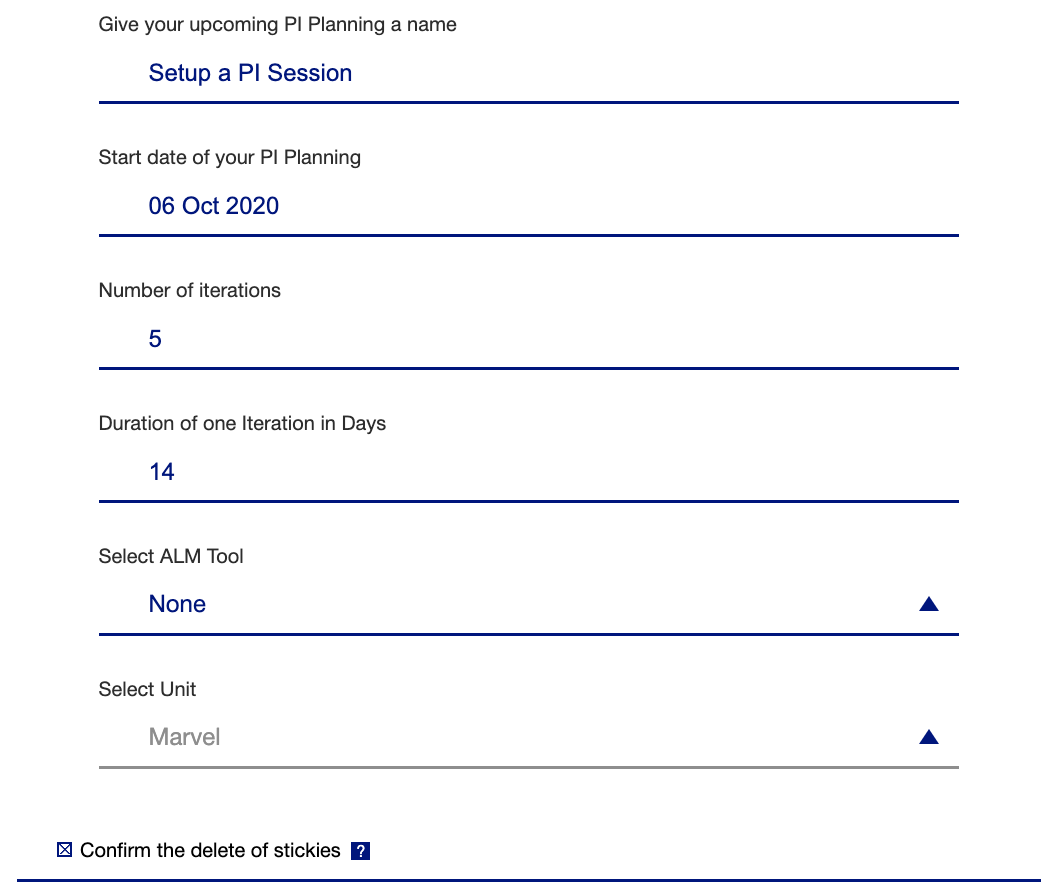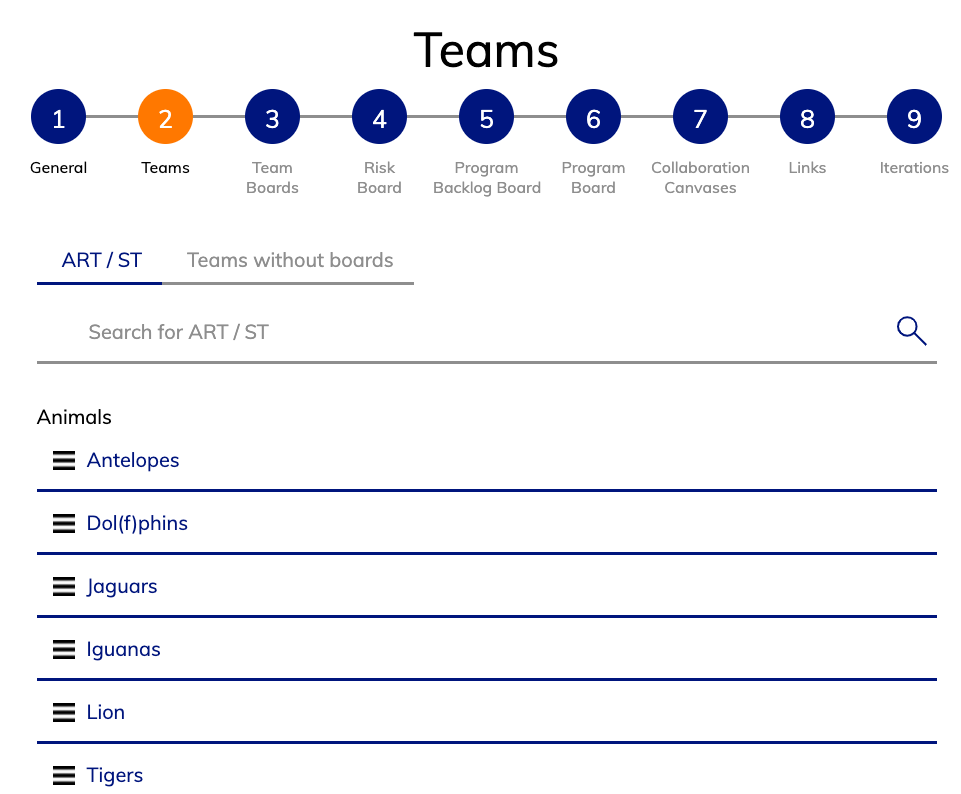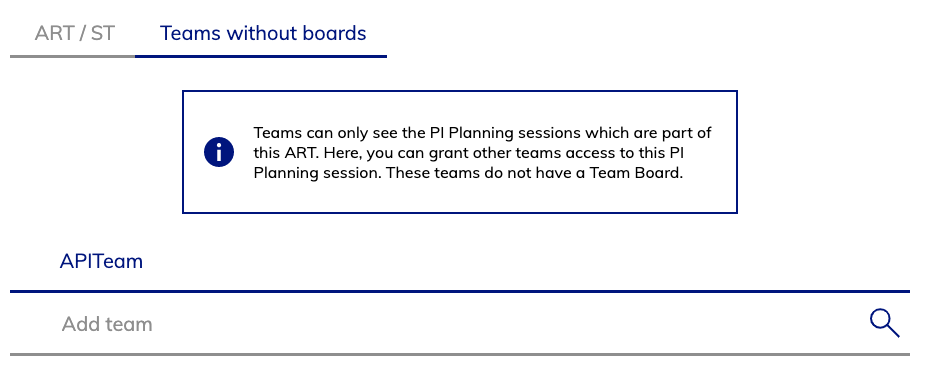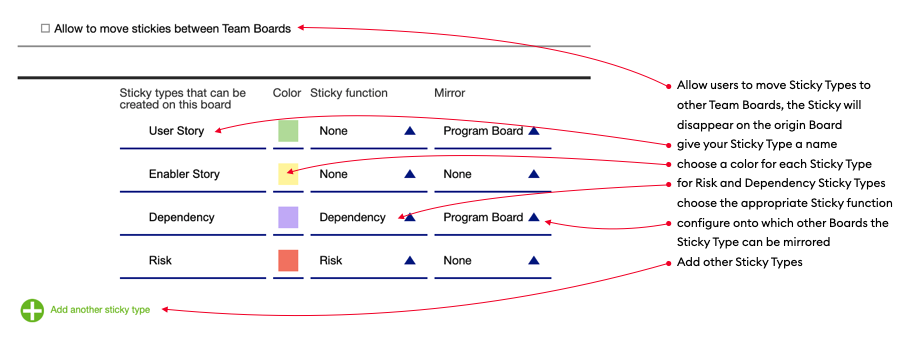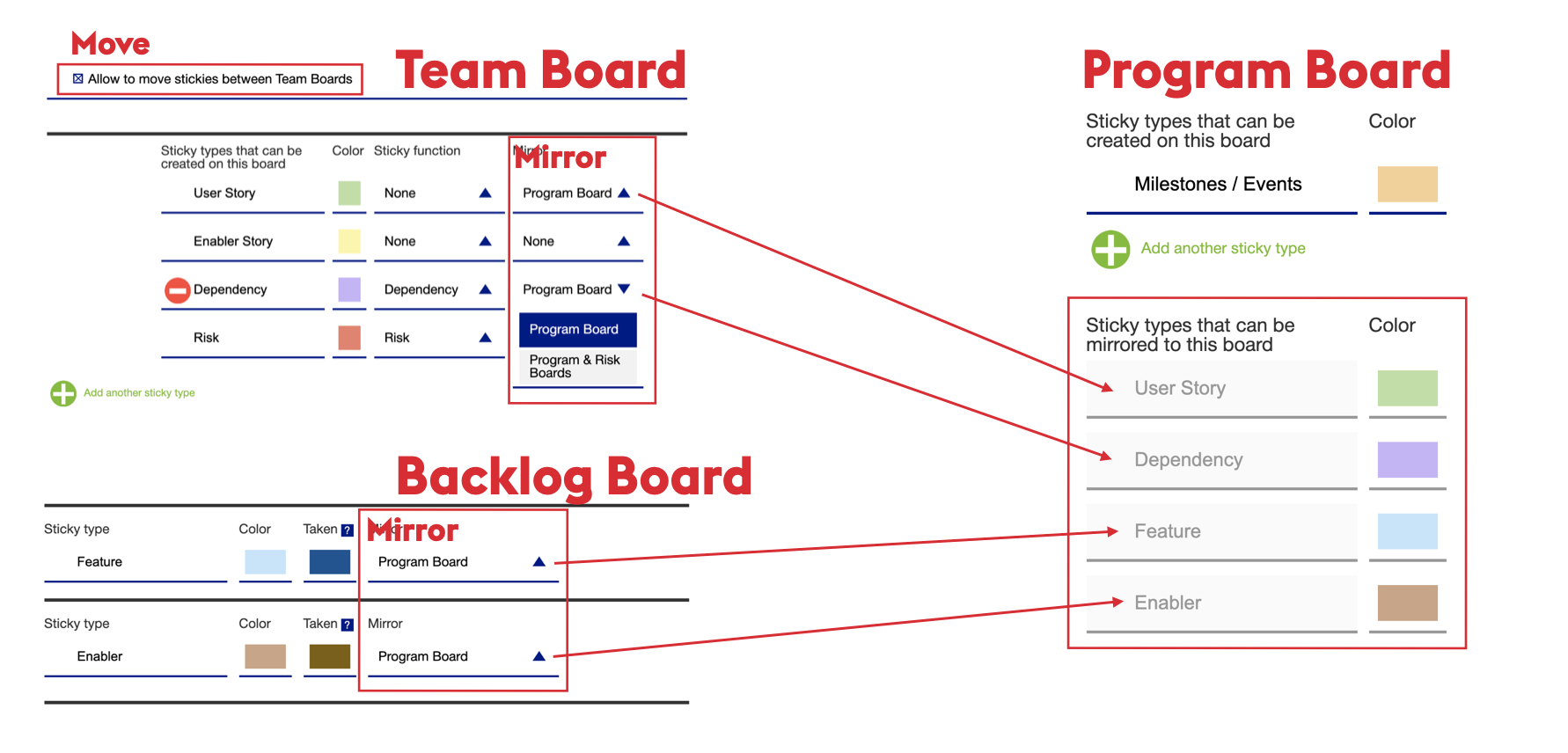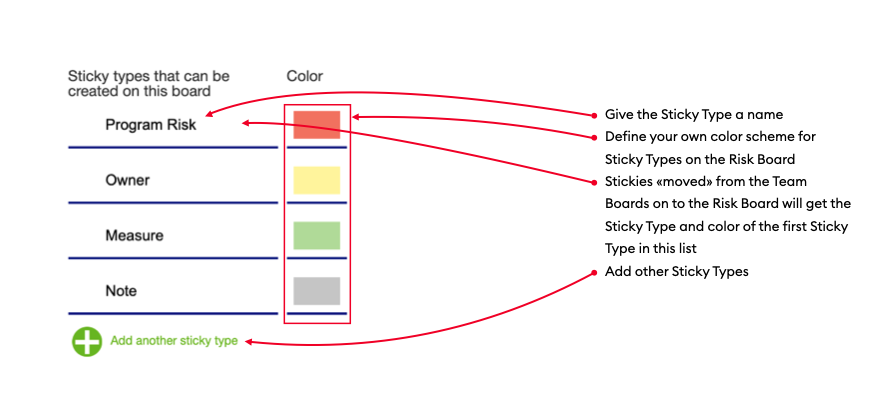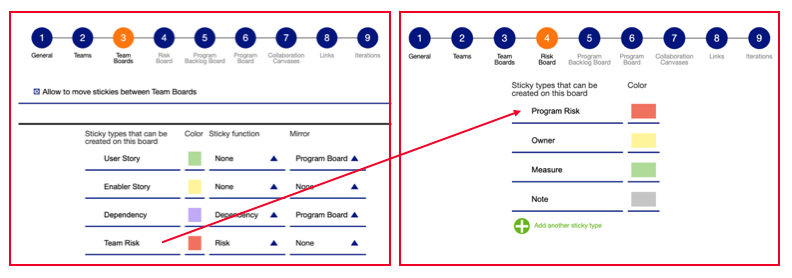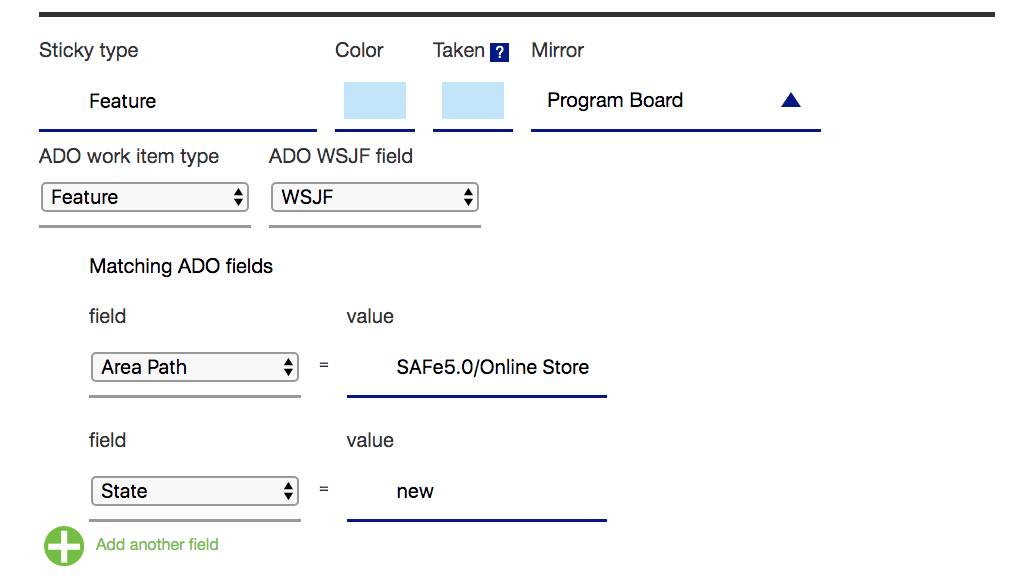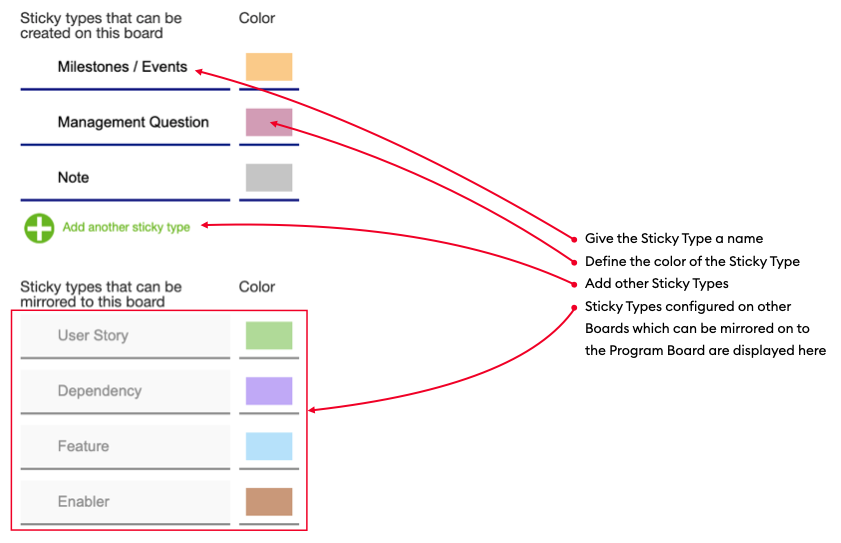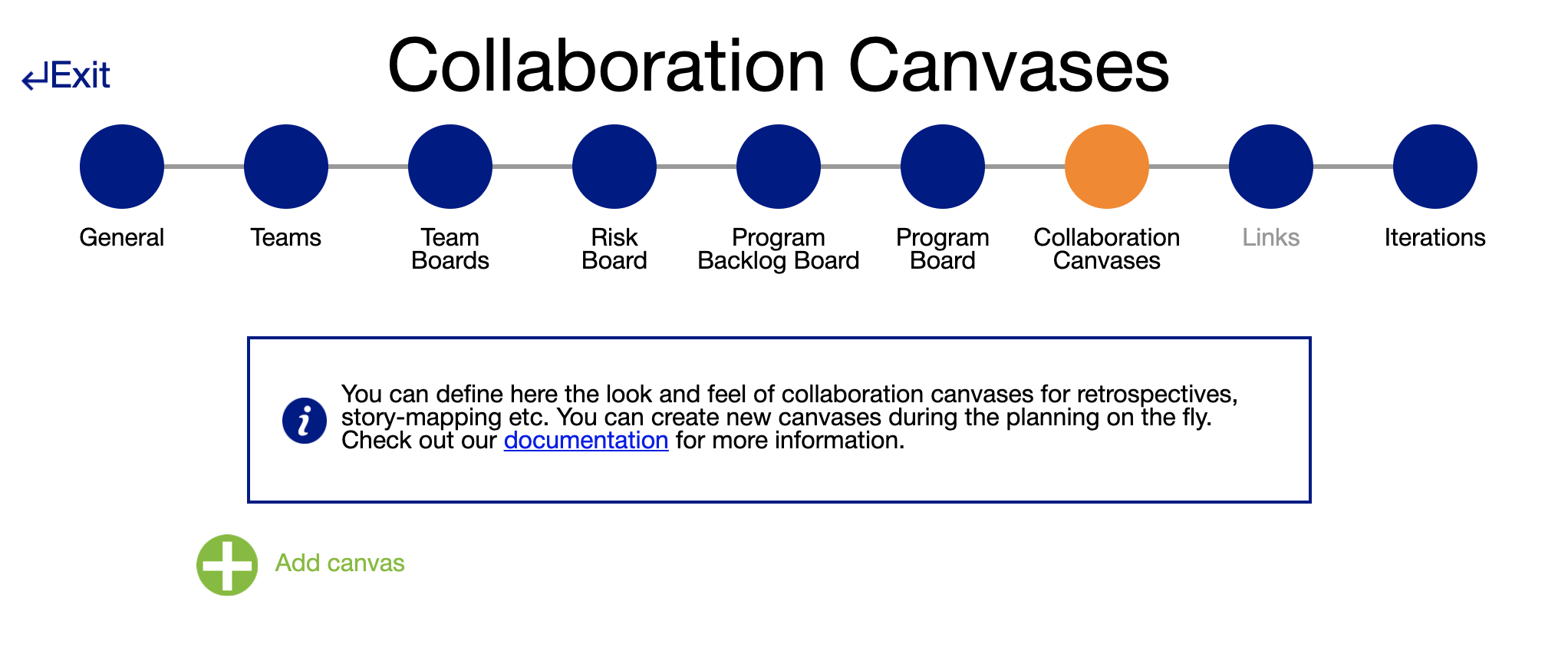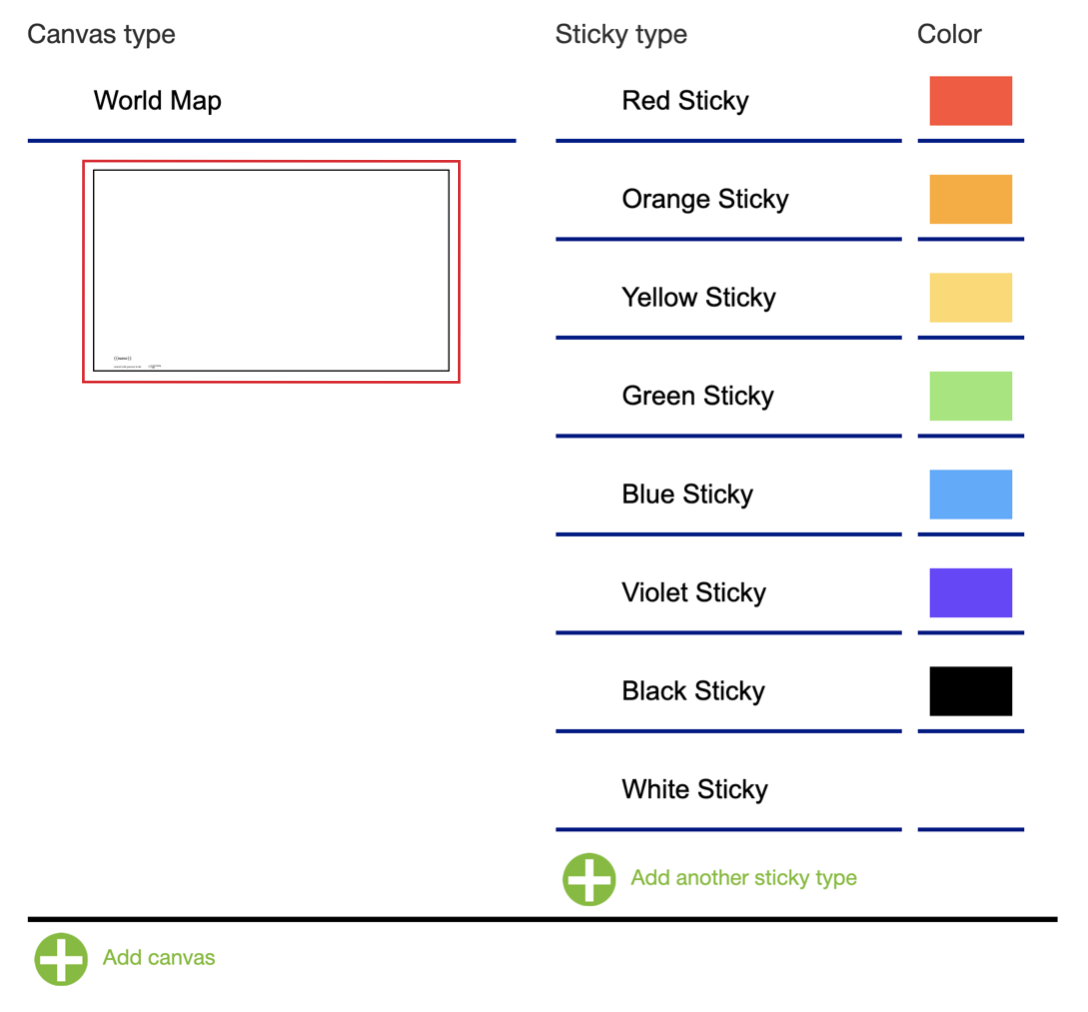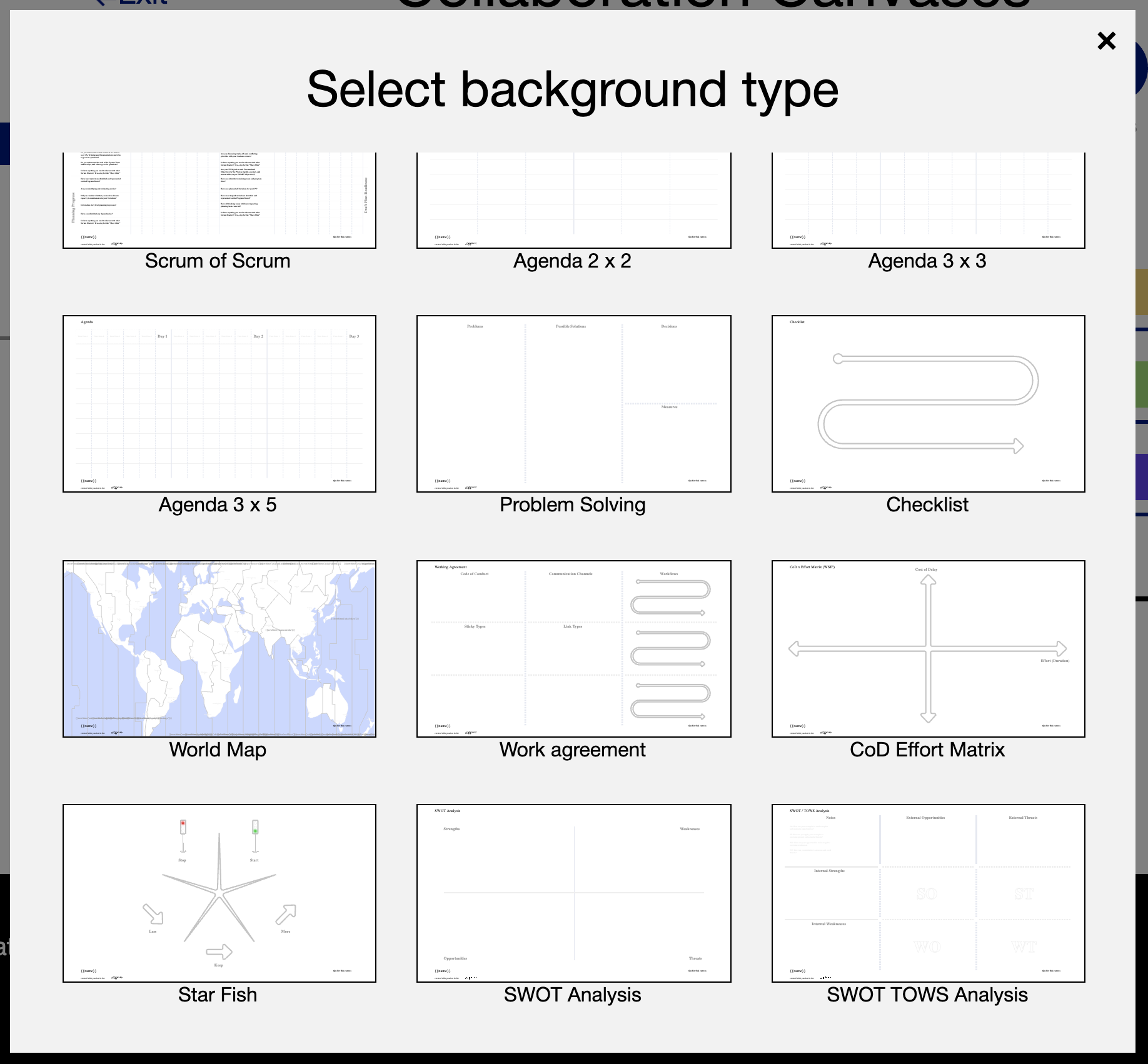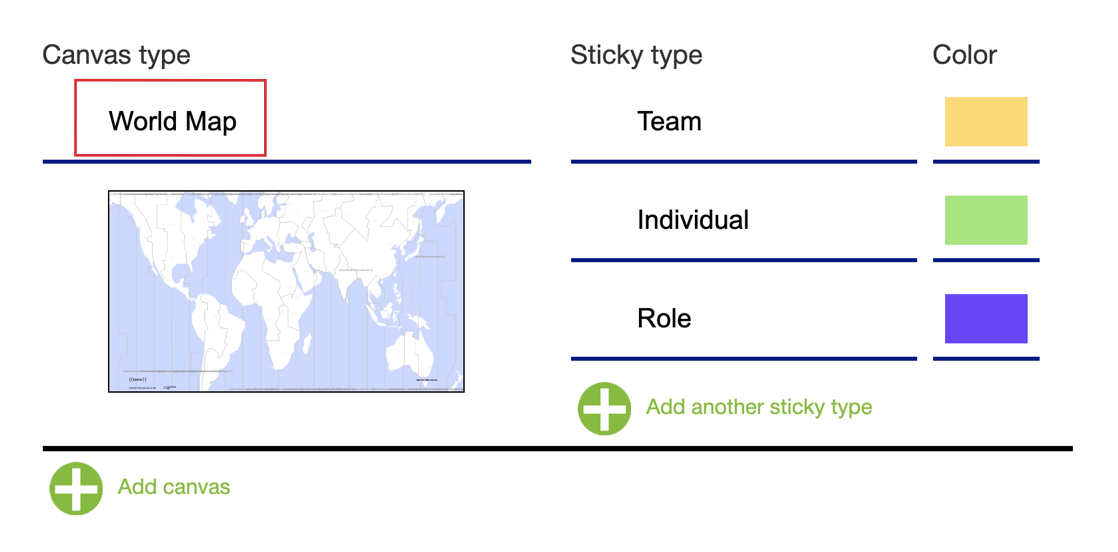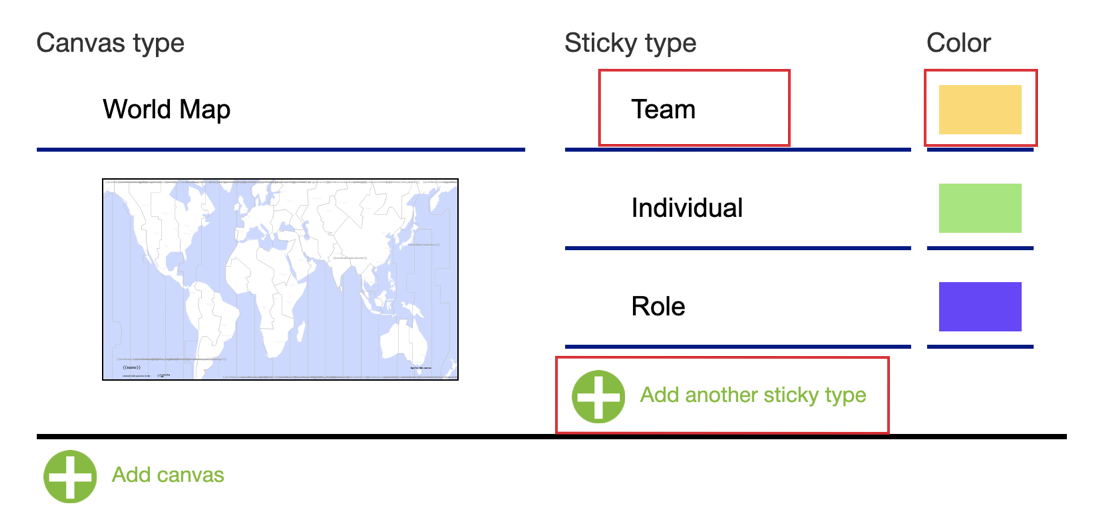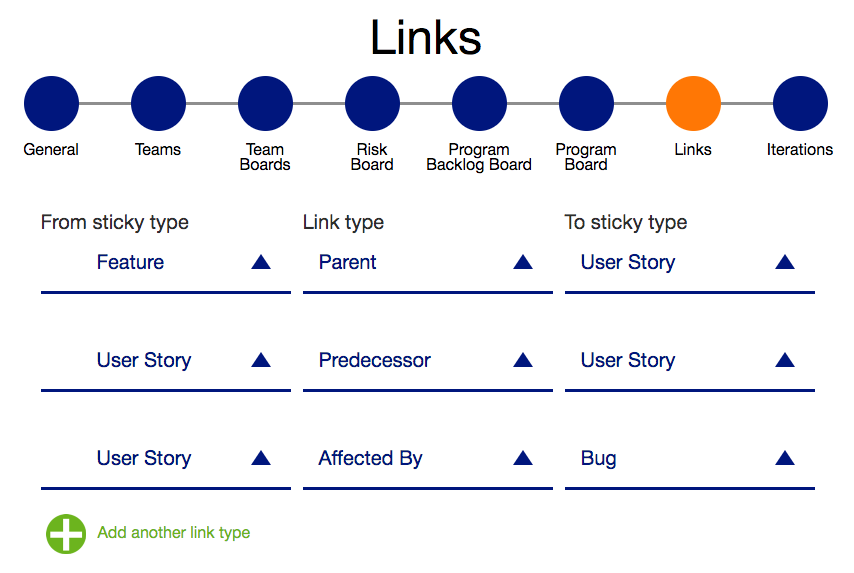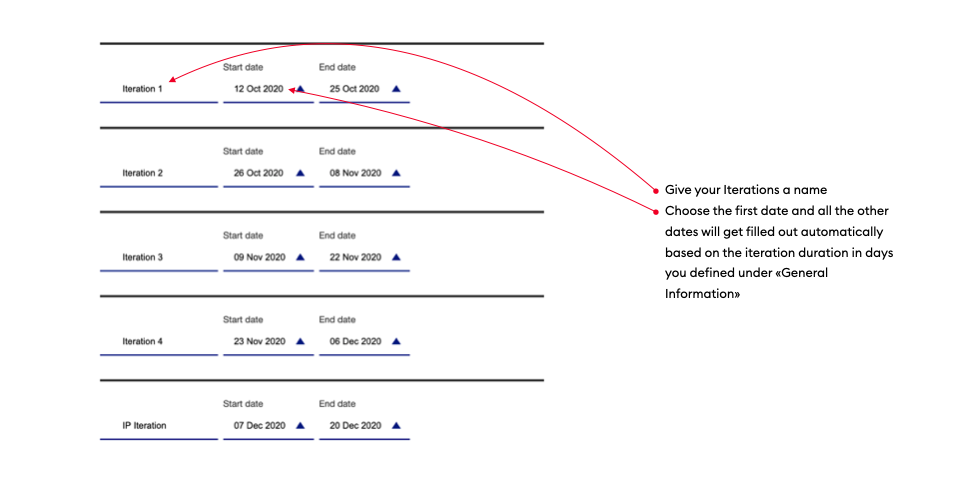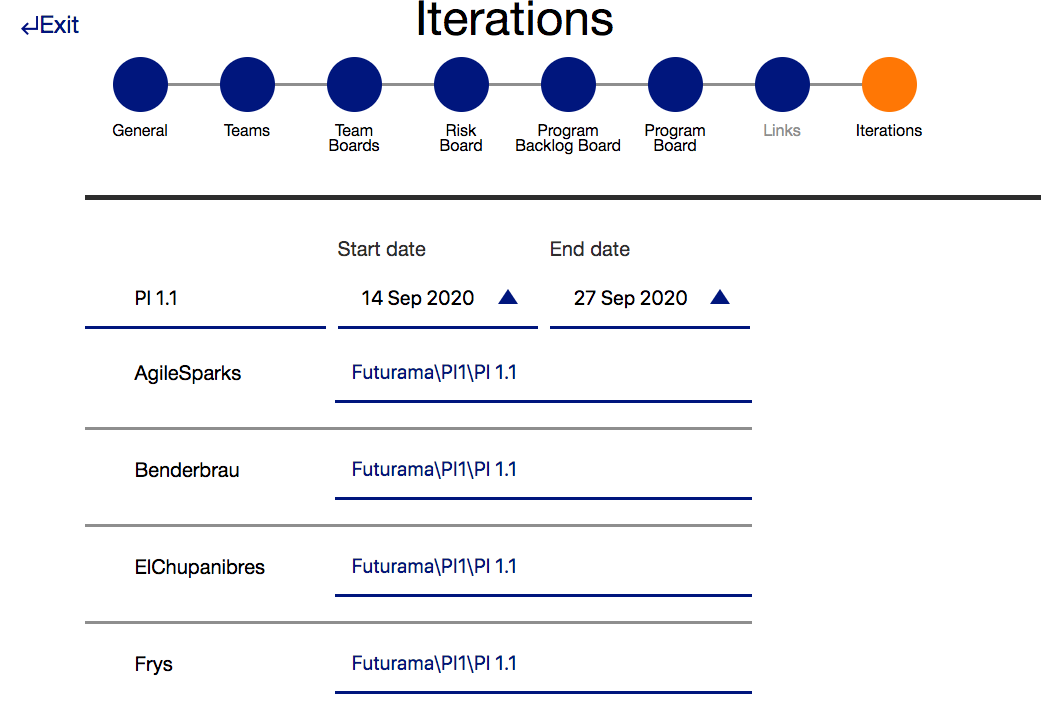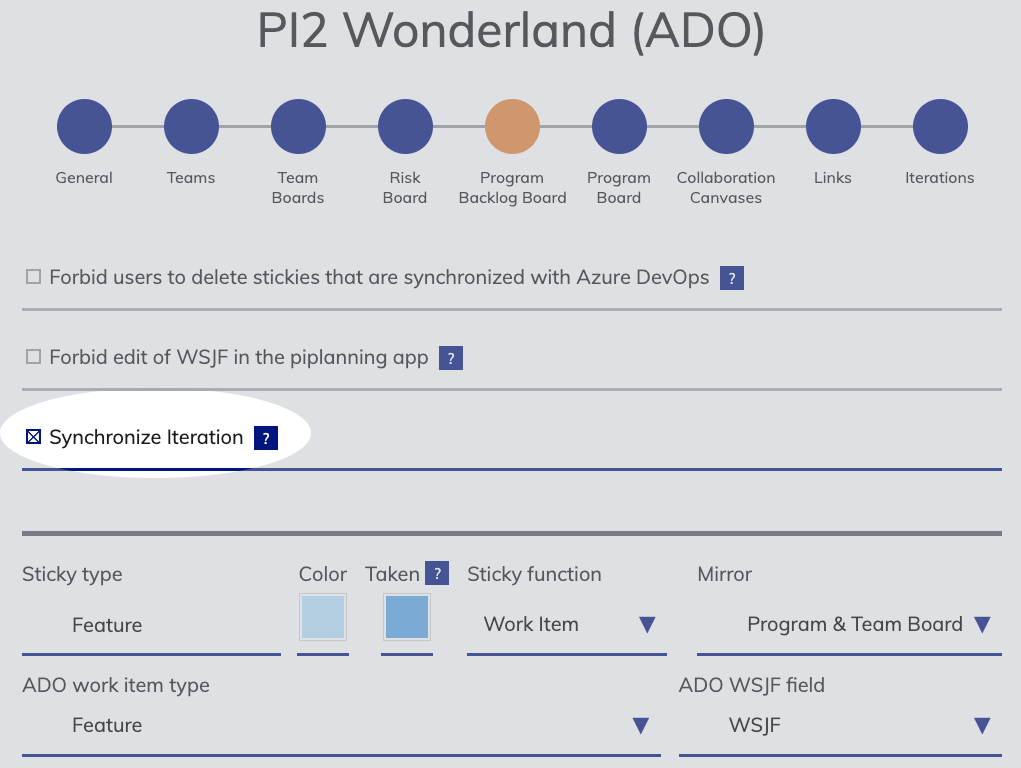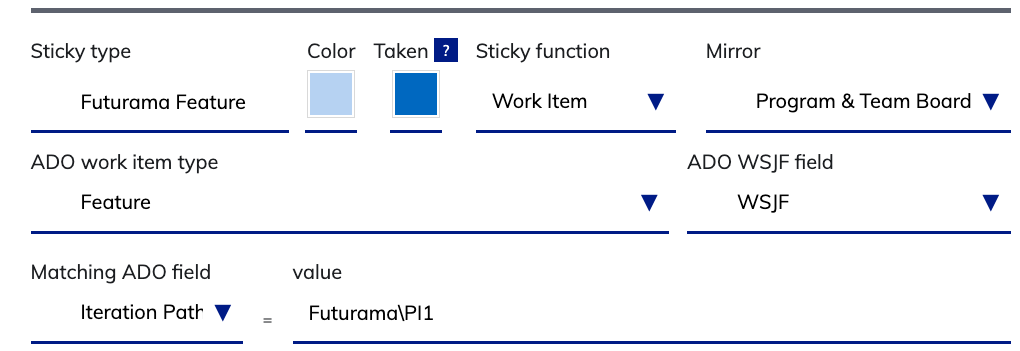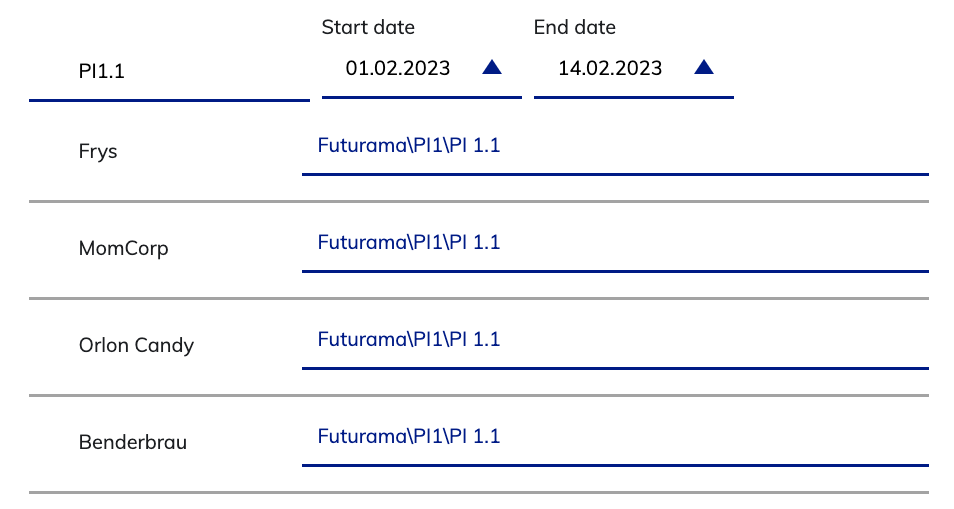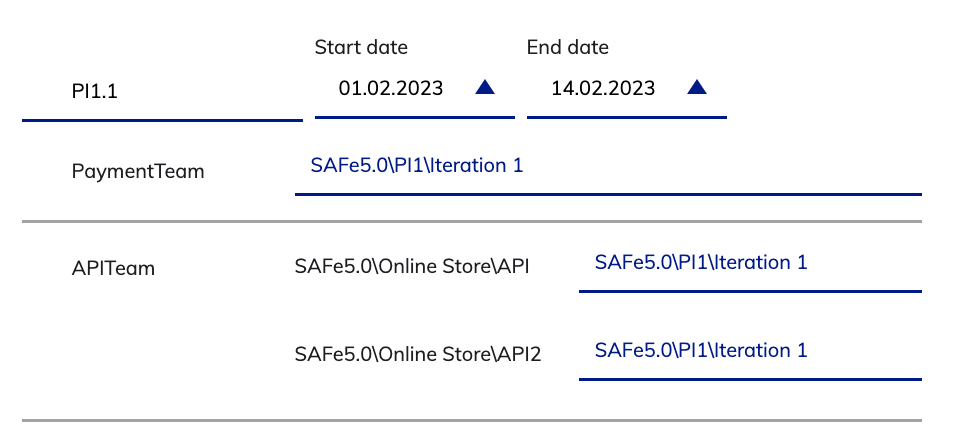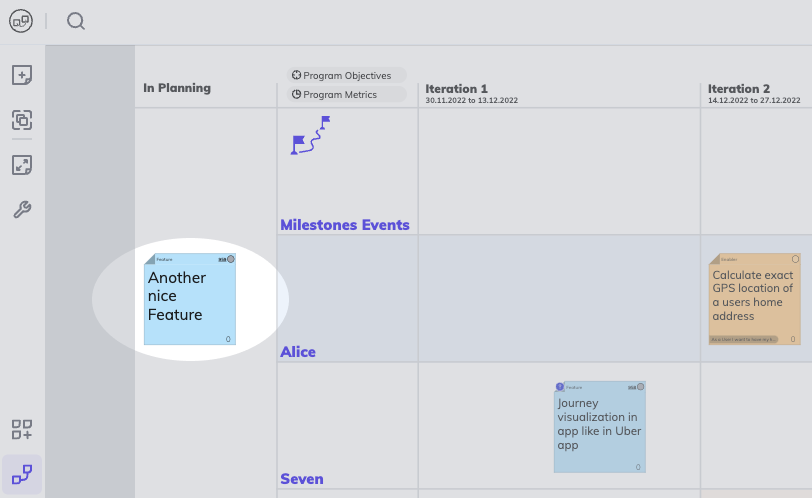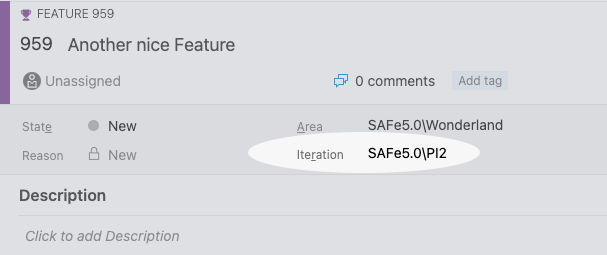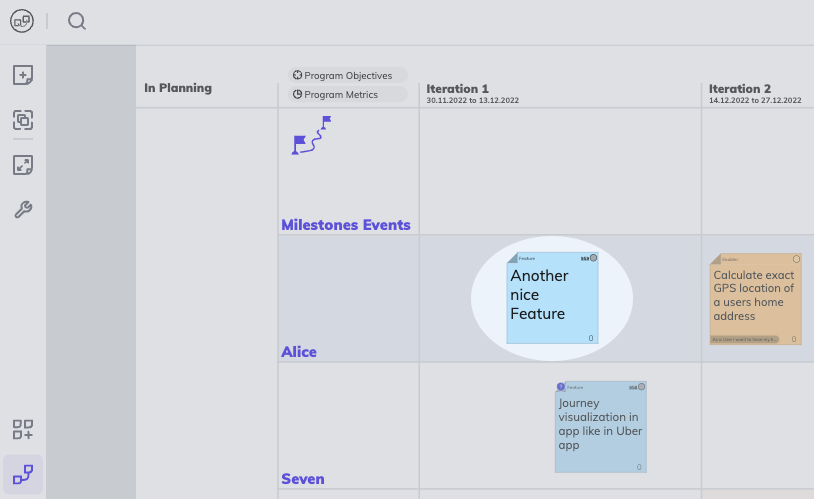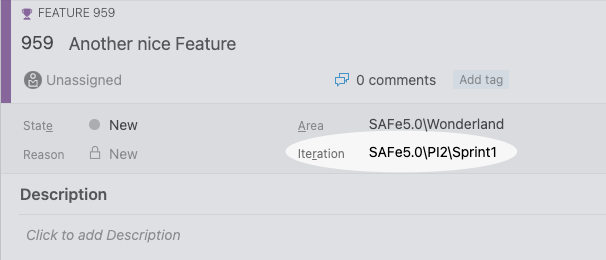with Azure DevOps Sync [ART]
Index
Attention
Before you can start with that you need to connect the piplanning app with your Azure DevOps instance: ALM Configuration
This is a great article about How SAFe® concepts map to Azure Board Artifacts
1. General Information
When creating a new PI Planning session in general information page, you can set the following fields.Name Description Start date of your PI Planning The date when PI Planning will take place. Can be edited also after session is created. The date is then displayed in the PI planning app when selecting a session from session list. Number of Iterations max. 12 Duration of one Iteration in Days This includes days on weekend. Based on the amount of days the dates under step 9 Iterations will be automatically filled in.
Select your ALM Tool Connection
2. Add Teams (Boards)
While configuring a new session, you have to decide which teams will attend this session. You can do that by selecting either an ART or a Solution-Train. Teams can only be added to a session during the session creation. You can not remove / add a team-(board) afterwards. In the example of the screenshot we selected the ART "Animals" which consists of the teams listed under the ART-Name. All these teams will get their own team-board. On this page you can: You can add teams to a session without giving them an own board and swimmlane. This is useful for scenarios where you want to provide a Solution Level Board spanning multiple Programs. A team which is attending a session (but does not have its own Team Board in that session) can then join (see and edit) that session as well.Team Boards / Program Board Swimmlanes
Selecting ART or ST
Attending Teams (without Board / Swimmlane)
To add a team as a an attendee to a session:
3. Team Boards
If you check the box, teams will be able to Move Stickies from one Team Board to another Team Board. For the Sticky Types Configured on the Program Backlog Board and the Team Board (Origin Boards) you can configure if Teams should be allowed to visualize (Mirror) the Sticky Type on another Board. Per default, Dependencies and Program Backlog Board Sticky Types can be mirrored to the Program Board. There are two special sticky functions in place A Sticky Type with function Dependency does have special attributes. Consider the standard workflow using dependencies. Hint Don't sync the dependency sticky to your ALM Tool. The dependency sticky is a "meta"-sticky used to get a simpler way to collaborate on dependency and visualize them on the Program Board (less crowded as you don't need to visualize all the dependent team level stickies.Configure Sticky Types for Team Boards
Move/Mirror Stickies
Move
Mirror
Sticky Functions
Dependency
Risk
To enable the sync of workitems / stickies between ADO and the piplanning app you need to map:Mapping of sticky types to work-item types
4. Risk Board
As Risk Sticky Types moved from the Team Boards on to the Risk Board will get the Sticky Type and color of the first Sticky Type, this might be a useful configurationConfigure Sticky Types for the Risk Board
5. Backlog Board
Configure Sticky Types for the Program Backlog Board
Backlog Board Sync
When you create / edit a piplanning session which is synced with ADO, you can define which work-items out of ADO should appear on the program backlog board. You can narrow down the work-items by creating a "filter-query": Unset area path If you do not specify an area path at all, it will pull in all the work-items matching that work-item type over all projects. If you select either "Area Path" or "Iteration Path", the backend will check if these values are valid (can be found in ADO).
If you create a new sticky note on the backlog board, the piplanning app will then create a corresponding ADO work-item with the values defined.Info about Paths (Iteration and Area)
6. Program Board
Configure Sticky Types for the Program Board
7. Collaboration Canvases
Collaboration Canvases can be provided to your teams to cover different use-cases before, during and after a PI Planning and are designed to support the whole Program Increment execution and lean-agile workshops on every level in your organization. Already in the piplanning app, check out how to Use Collaboration Canvases. press "Add Canvas" provide a Canvas Type Name press on the Background Preview Choose your Background Your teams will see all Canvas Types you provide in the piplanning app. Provide the Collaboration Canvas Type with a meaningful name. For each Collaboration Canvas Type you can define what Sticky Types teams will be able to use. Every Canvas Background comes with a pre-defined Sticky Type set adapted for the specific background. You can add, change or delete Sticky Types.Add a new Collaboration Canvas Type
Add Canvas Type
Choose a Canvas Background
Provide a Canvas Type Name
Define Sticky Types
8. Links
Links between workitems can be visualized in the piplanning app. During the session creation or while editing a existing session in the cockpit you can map the links of the app to the links in ADO. To get an idea on how the links look like in the app, check out this page: Linking A practical example: If you want to set the Parent link between Feature and User Story, you would configure it like that: To define Predecessor between two User Stories (will be visualized in the app like FromSticky→ToSticky):How to interpret From and To (direction of links)
From sticky type Link type To sticky type Feature (is) Parent (of) User Story From sticky type Link type to sticky Type User Story Predecessor User Story Restrictions in combination with ADO
9. Iterations
Create or edit a piplanning session Make sure that you have included the teams you have previously mapped to area-paths In the last step of the piplanning-session configuration you can now map teams to iteration-paths If you have multiple area-paths for one team, you have to set the iteration-path for each area-path as well For your work items managed on Backlog level you can synchronize the Iteration field. Depending on the iteration in which a Backlog level sticky type is planned, the iteration is synchronized back to ADO based on the iteration paths which are defined for your teams. To enable synchronization, check the corresponding box under the Backlog Board configuration. In case you do not specify an iteration-path for the sticky-type: It will get every feature in to the app which matches the field-filter criteria and therefore any workitem (no matter of the area-path value) will appear. In case you do specify the iteration-path: Every feature which matches the iteration-path of the sticky-type OR matches any of the defined iteration-paths of any team (of the same ART) defined in the cockpit (Iteration screen) will appear. Keep in mind that the team iteration-path needs to be a subpath of the iteration-path defined on the sticky-type or it will not be included. In case of a sticky-type with iteration-path = “Futurama/PI1“ Only team iteration-paths which are bellow “Futurama/PI1“ will be taken into account. Will be included: Will NOT be included: "Another nice Feature" pulled in and visualized on the Program Board for planning. Feature planned delivery in Iteration 1Map Iterations to Area Paths (Teams)
Synchronize iterations for Backlog level work items
Iteration path filtering
Example
Use the Session in the piplanning app
Start the piplanning app in your browser and start planning.

